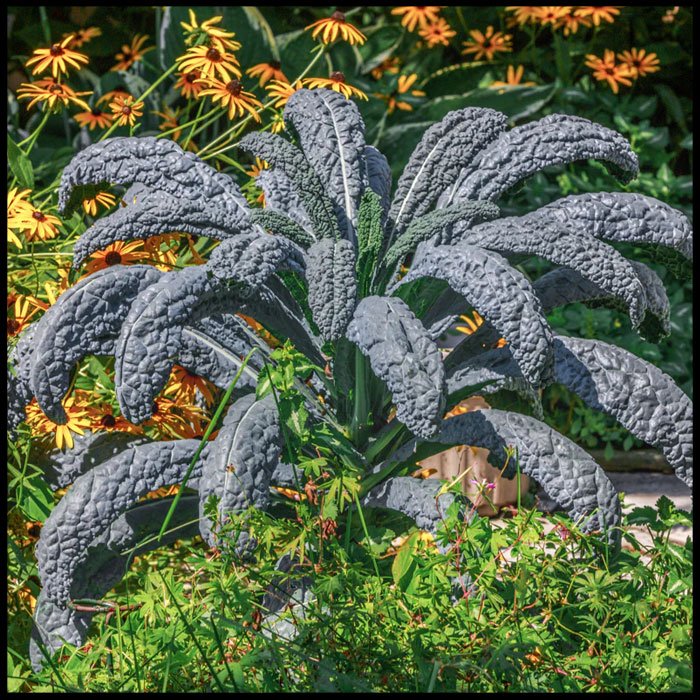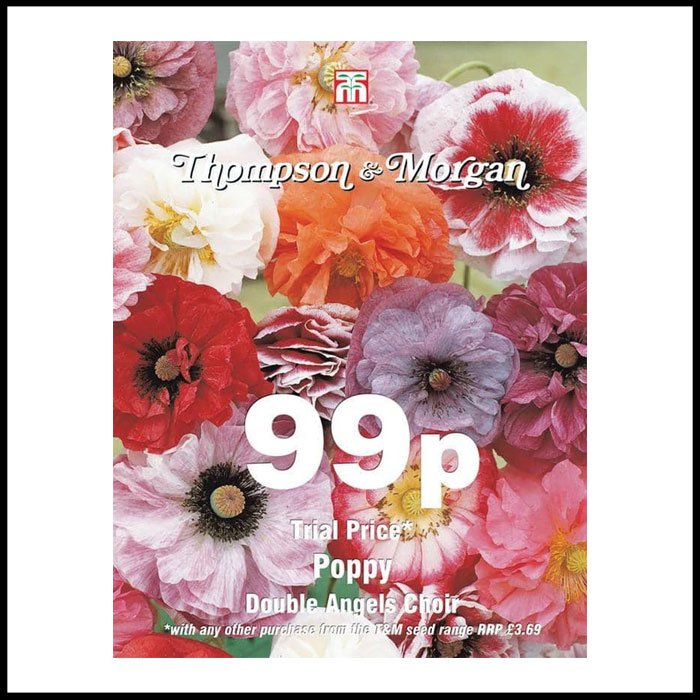Kale - Nero di Toscana
The fully grown plants of Kale 'Nero di Toscana' have attractive dark green, deeply savoyed, strap-like leaves. Excellent winter hardiness makes kale a useful winter to spring vegetable at a time when fresh garden produce is scarce. Kale 'Nero di Toscana' can also be used as a baby salad leaf ingredient adding texture and a peppery taste to mixed salads.
Height: 90cm (36"). Spread: 60cm (24").
Companion planting: Try growing kale with Nasturtiums to draw cabbage white butterflies away from your crop, and mint to help deter flea beetles.
The fully grown plants of Kale 'Nero di Toscana' have attractive dark green, deeply savoyed, strap-like leaves. Excellent winter hardiness makes kale a useful winter to spring vegetable at a time when fresh garden produce is scarce. Kale 'Nero di Toscana' can also be used as a baby salad leaf ingredient adding texture and a peppery taste to mixed salads.
Height: 90cm (36"). Spread: 60cm (24").
Companion planting: Try growing kale with Nasturtiums to draw cabbage white butterflies away from your crop, and mint to help deter flea beetles.
The fully grown plants of Kale 'Nero di Toscana' have attractive dark green, deeply savoyed, strap-like leaves. Excellent winter hardiness makes kale a useful winter to spring vegetable at a time when fresh garden produce is scarce. Kale 'Nero di Toscana' can also be used as a baby salad leaf ingredient adding texture and a peppery taste to mixed salads.
Height: 90cm (36"). Spread: 60cm (24").
Companion planting: Try growing kale with Nasturtiums to draw cabbage white butterflies away from your crop, and mint to help deter flea beetles.
For salad leaves Kale can be sown indoors all year round. Harvest 30 days from sowing during summer and up to 60 days during winter months. For mature plants, sow Kale seed from March to May. Direct sow outdoors into a well prepared seedbed, for transplanting to their final positions later on. Sow at a depth of 1cm (1/2") and distance of 23cm (9") between rows. Kale plants can be transplanted to their final positions approximately 5 weeks from sowing.
Grow kale in firm, rich fertile, well drained soil in sun or semi shade. Prepare the soil in early spring by adding plenty of well rotted farmyard manure to the soil to improve its structure and fertility. Apply lime to acid soils to reduce the acidity and lessen the risk of clubroot. When transplanting kale, plant it slightly deeper in the ground than it was in the seedbed. Plant kale at a distance of 60cm (24") apart and cover with a protective netting or fleece to prevent attack from birds and insects. Water the plants thoroughly after planting.
Kale is exceptionally hardy and requires little aftercare. Water when necessary and hoe between plants regularly to prevent weeds from establishing and bring insect larvae to the surface. Kale can be harvested from September as young leaves using a cut and come again method, but will stand well in the ground for a long time throughout winter, and improves in flavour after it has been frosted. Pinch out the centre stem first to encourage side shoots to develop. Harvest kale when it is required as the leaves do not store well, unless they are frozen.
















